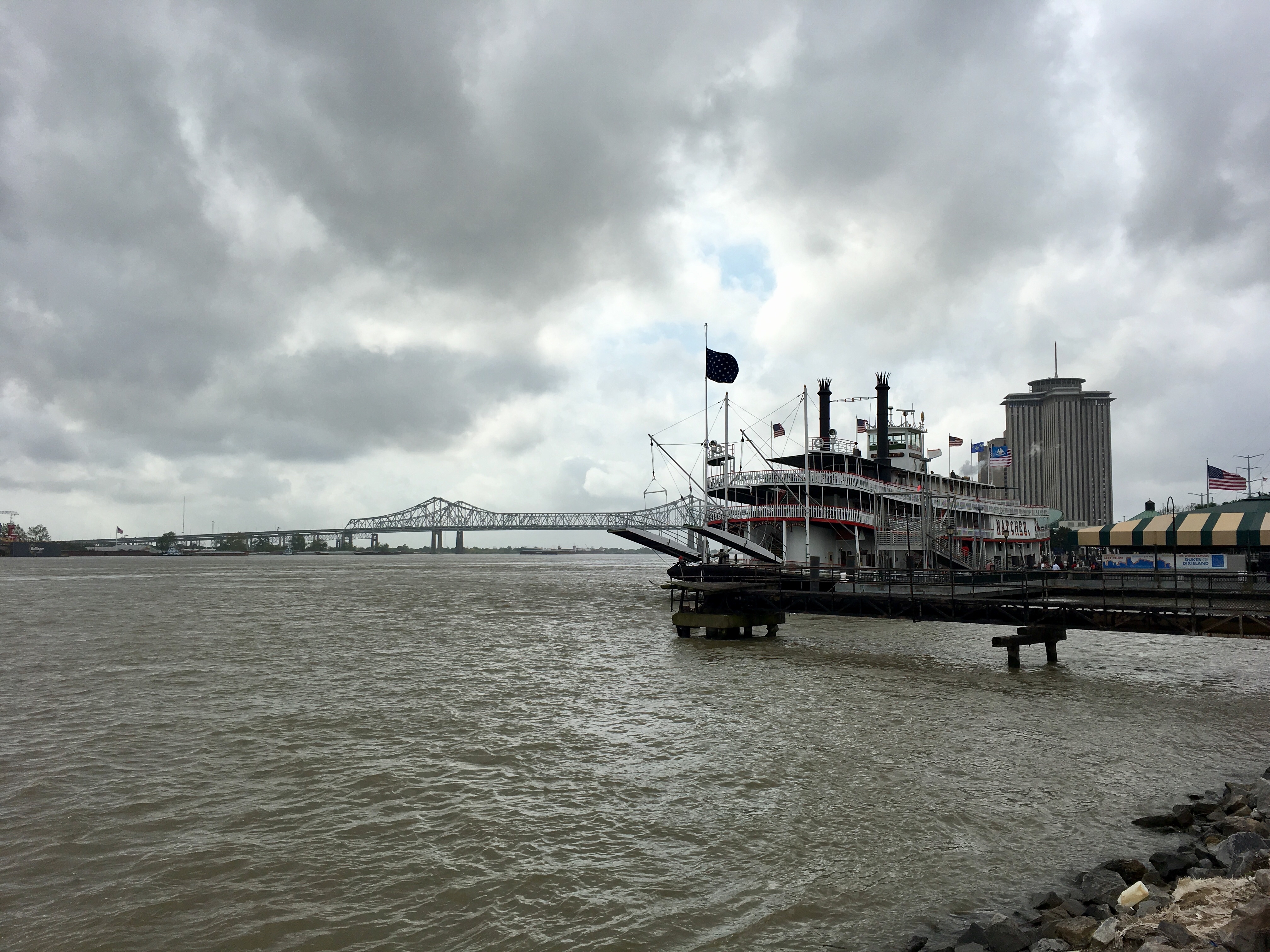PD: We’re told it’s really not that hot but not being used to it, we walk to the river to welcome the breeze and escape from the heat and humidity. The sound of the Mississippi is a relaxing distraction from the clamour of the city behind me, in spite of its aggressive swells and ripping currents.
Being in the Crescent City to research the relation of performance to the city has made me focus on the way the city performs itself, so to speak, more than I have previously (I have been here twice before, in 2013 and 2016). Walking through the city across the last few days, I have been struck by how different the noises of New Orleans are from those of London. Of course they share sounds of people and traffic but the machines that navigate New Orleans are different to London, and the focus of the noise of the people we have encountered seems different too.
The soundscape of the city is punctuated by the wail of sirens, by the invasive claxon of fairground organ music from Steamboat Natchez, by the horns of trains and ships.
I had forgotten how loudly the streetcars clang and clatter.

SA: As we walk through the city, we begin to make a series of audio recordings. These are tentative steps, we are beginning a practice here, a method of attending to a city. We begin, aware of the importance of both purpose and accident. There are sounds that we seek out, the horn sounded on boats on the river, a bustling market, an apparently empty street, music spilling out of bars as we pass, and our feet on the changing surfaces of the city. In other recordings, we have less purpose, we begin uncertain of what we will find.
In one early recording, we’re on Bourbon Street, there’s a live band on the street just ahead of us. We press record, and continue walking down the street. As we walk, I am acutely aware of listening to the sounds of the street: the sound of the band as we near, pass by and cross the street, and the quiet once we leave the Street.
The following day, we are at the river, standing at railings, watching boats navigate the curve of the river, the crescent that gives the Crescent City its name. This time, I am recording with headphones, listening for audio levels, and hearing, with augmented clarity, the steady thrum of the engines the lapping of waves that grower louder in the wake of each passing boat. There are three, perhaps four cyclists who stop at the railing for a time and, later, cycle in what seem indolent circles in an empty industrial hanger. They ring the high cycle bells a few times, there are snatches of conversation, but it’s not possible to hear the words.
Through these sounds, we begin to sense the work on the river, work with and against the current of the river. A man walks by, greets us and stops a while to talk. He pilots a boat at Baton Rouge. He points out the turn of the boats on the water, the effort the pilots make to stop each one heading into the side of the river, right where we stand. I listen again to the lapping of waves, struck by the weight of each against the edge, to which we stand.
I become aware that, as we record, so we attend to the sounds of a place, in ways that I find continue long after we stop a recording. To think about recording becomes an act of listening, of wondering about the openness and selection of what we collect, of wondering how we will come to understand these walks in the days ahead and in moment of listening back, listening again, listening to the city both here and, afterwards, from afar.

